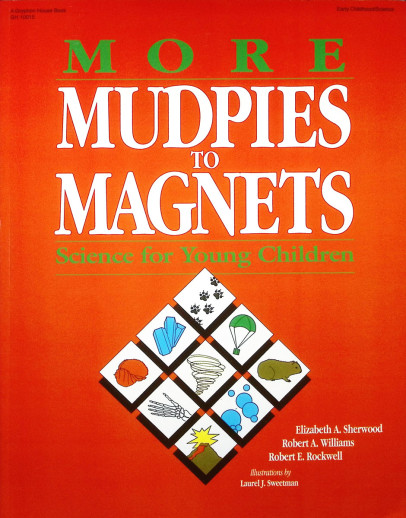We use cookies to make your experience better. To comply with the new e-Privacy directive, we need to ask for your consent to set the cookies. Learn more.
More Mudpies to Magnets
These are very helpful compendiums of science activities especially conceived for the youngest "scientist." Each has an introduction, materials list, detailed instructions for you (including discussion and conclusion), plus a "Want to do more?" extension activity to use if you want to expand on the activity. The original book is somewhat less useful than the sequel. Although activities are great, the organization makes it a little difficult to find activities to go with a particular study. Basic units of organization include: On Your Own (Science Center Activities), Building with Science (Construction and Measurement), Science for a Crowd, Paints and Prints, Wet and Messy, Science to Grow On (Health and Nutrition), Learning About Nature (Outdoor Science), and Acting Out Science in a Big Way. Use the index to locate activities on particular science topics. The second book has a more useful organization. Basic units include: Colors, Crystals and Creations (Chemistry); How Things Work (Physics); Digging in the Dirt (Geology); How Hot, How Cold, How Windy, How Wet (Weather); Aerial Acrobatics (Flight and Space); Roots and Shoots (Plants); Houses for Slugs, Hideouts for Hamsters (Zoology); and How Much, How Far, How Many (Mathematics). A most welcome feature of both is the inclusion of a suggested minimum age for each activity.
| Product Format: | Softcover Book |
|---|---|
| Grades: | PK-2 |
| Brand: | Gryphon House |
| Author: | Elizabeth A. Sherwood |
| ISBN: | 9780876591505 |
| Length in Inches: | 11 |
| Width in Inches: | 8.5 |
| Height in Inches: | 0.5 |
| Weight in Pounds: | 1.3 |
| Edited by: | Kathy Charner |
| Edition: | Illustrated |
| Illustrated by: | Laurel Wesetman |
| Pages: | 204 |
| Publication Date: | 12/4/2013 |


Needed for our Science curriculum.
It goes along with the science curriculum I already bought for my 1st grader.
I chose this book because it is required text for Elemental Science: Intro to Science. Looking forward to using it!
This was recommended from our science curriculum.